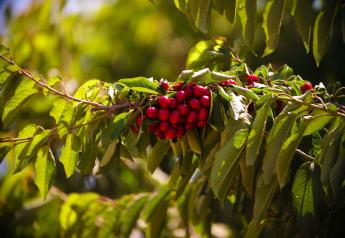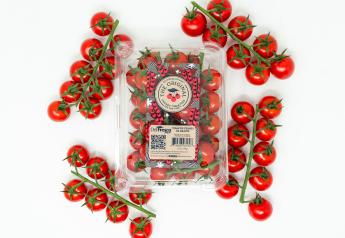Avocado consumption has room for growth, Rabobank report says
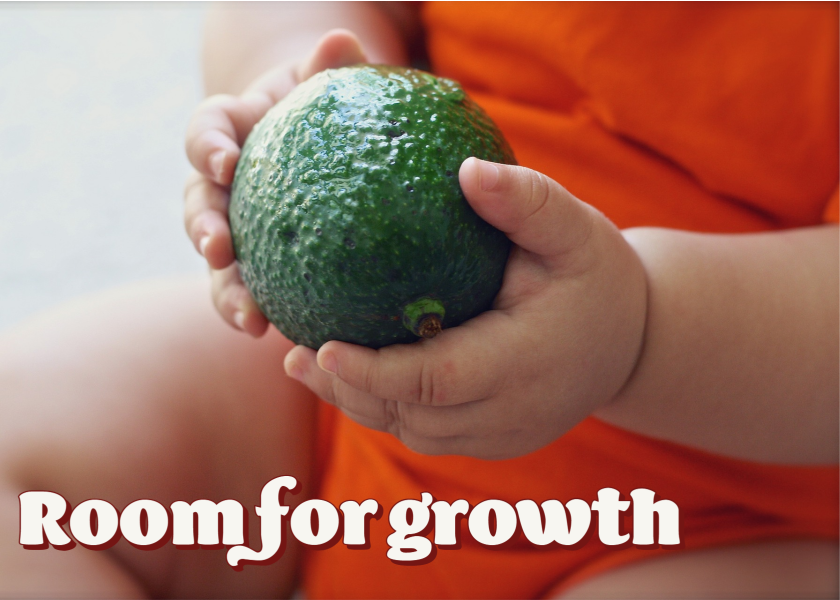
U.S. avocado per capita consumption could rise from 9 pounds per capita in 2021 to 11 pounds in five years, according to a new avocado market analysis by Rabobank.
Authored by David Magana, senior analyst for fresh produce and tree nuts for Rabobank, the report signals good prospects for both short-term and long-term consumption gains.
This year, the report said healthy consumer demand for avocados is fueled by economic recovery, sustained retail sales and increasing foodservice activity.
The report said increased shipments from Peru and Mexico will offset a lighter California crop in 2021. However, avocado availability in the U.S. may be tight in some weeks later this summer when California’s and Peru’s seasons end and Mexico transitions to the new season, according to the report.
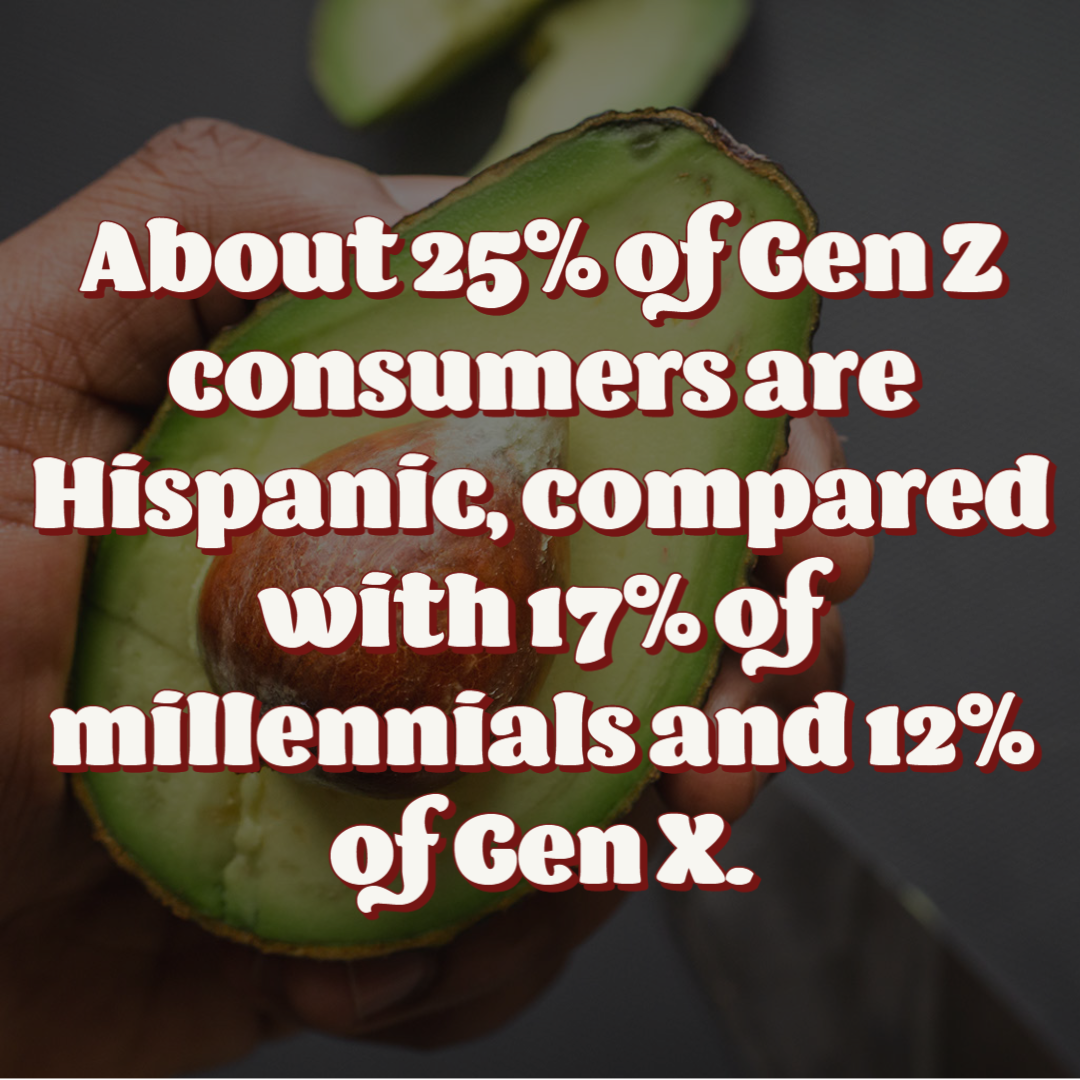
Green gold rising
Per capita avocado consumption, according to the report, has jumped from 4 pounds in 2010, rising to 8.5 pounds in 2018. Following that trend of per capita gains of about 8% annually, per capita avocado consumption could exceed 11 pounds per year by 2026, the report said.
Consumer demand for avocados has been increasing, and one promising element of future demand is changing U.S. demographics, according to the report. Younger generations feature a greater proportion of Hispanic consumers, the report said.
About 25% of Gen Z consumers are Hispanic, compared with the 17% share among millennial consumers and 12% among Gen X consumers.
“Hispanic consumers in the U.S. tend to consume more avocados than the average U.S. consumer,” the report said.
Mexico’s per capita consumption, as a point of reference, is 18 pounds, which the report said “shows the headroom that remains” in less mature markets.
About 40% of U.S. households said they purchased avocados in the past 12 months, according to the report. That is lower than fruits such as blueberries, lemons, watermelon, grapes, oranges and strawberries and significantly lower than apples and bananas, which are purchased by about two-thirds of households.
Still-rising production prospects in Mexico, Peru and Colombia point to further increases in shipments to the U.S. and other markets, according to the report.
The report said Mexico will continue to be the main provider of avocados to the U.S. market, with shipments to the U.S. rising by single-digit percentages in 2021.
Acreage of avocados continues to rise in Mexico, with current acreage near 568,000 and about 50,000 acres of non-bearing groves yet to produce commercial fruit.
California’s avocado production has been flat to declining over the past two decades, but rising imports have allowed U.S. per capita consumption to gain.
Avocado production and exports from Chile have been flat to declining, reflecting tight water availability in some regions and growth in competing markets in Europe and Asia.
Peru has become an increasingly important supplier of avocados to the U.S. market. Avocado planted acreage in Peru is estimated at 106,000 acres in 2021, up from about 72,000 acres in 2016. The report said exports from Peru in 2021 are expected to reach a new record of 460,000 metric tons, a 26% increase compared with a year ago and almost 160% higher compared to 2016.
Avocado production and exports in Colombia will expand rapidly, the report said, with most shipments directed to European and Asian markets.
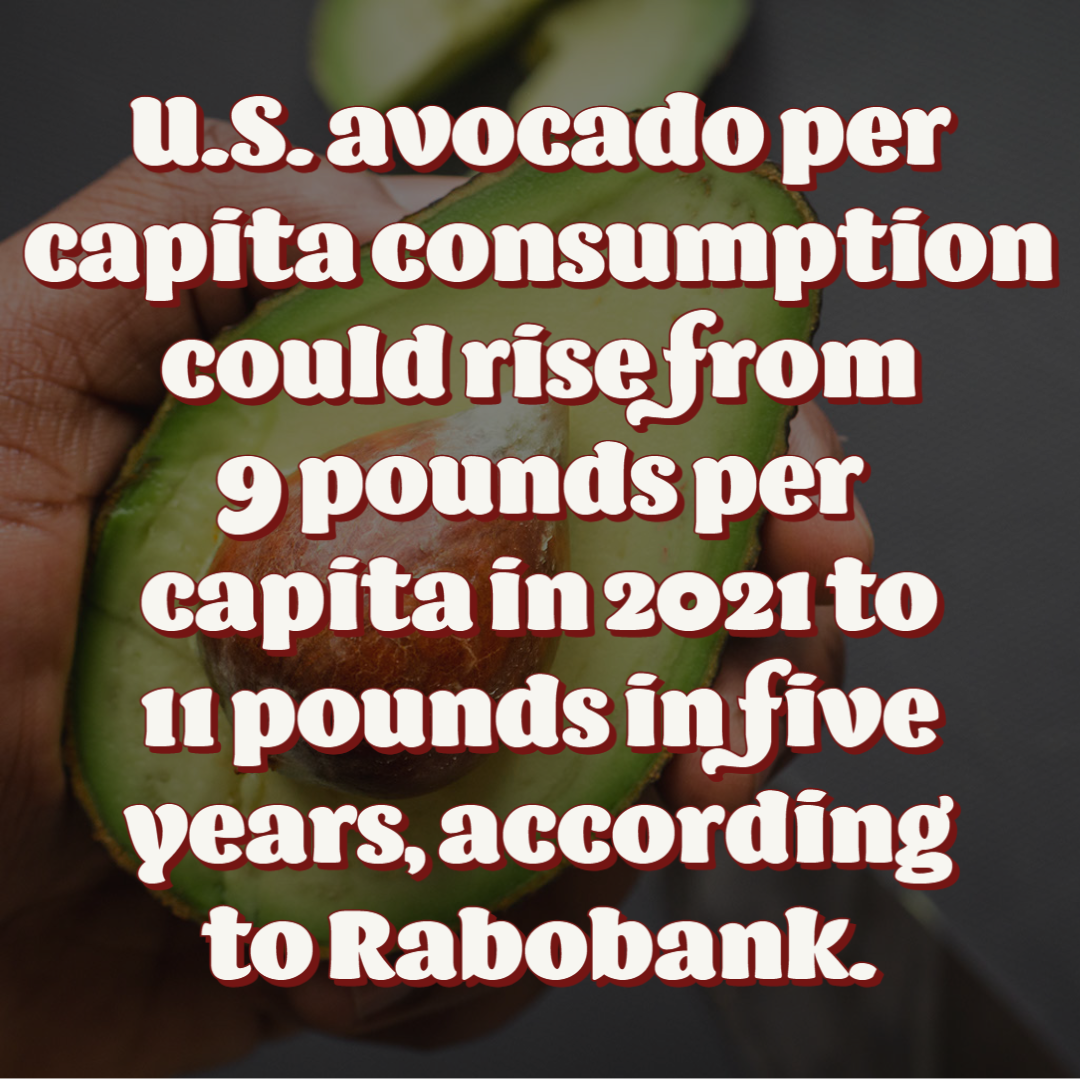
Importance of sustainability
Environmental sustainability along the supply chain will become increasingly relevant to maintain or gain market access, according to the Rabobank report.
Environmental sustainability and social responsibility will become relevant points of differentiation in the U.S. and other markets, the report said.
Investments to reduce food waste also loom large, the report said, including innovations in logistics and ripening facilities and post-harvest processes that extend shelf life.




